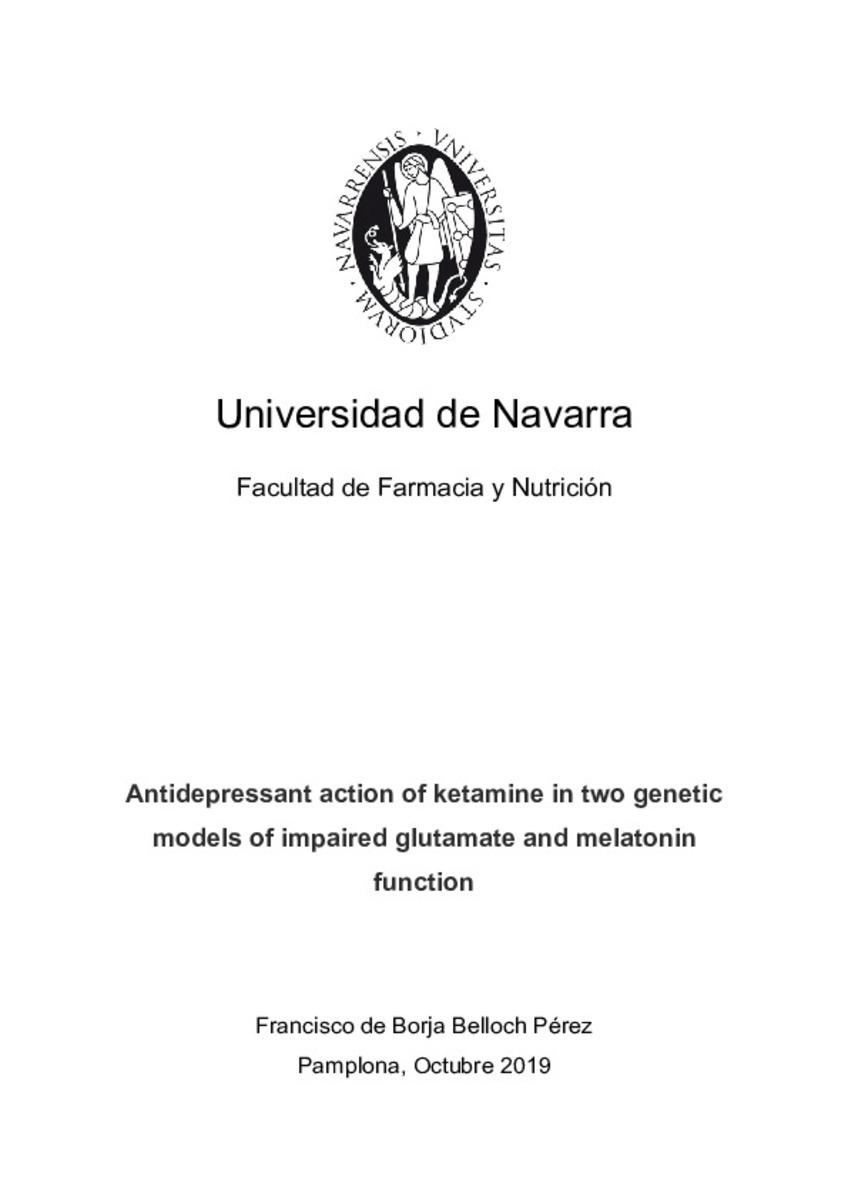Antidepressant action of ketamine in two genetic models of impaired glutamate and melatonin function
Keywords:
Psicofarmacología
Efectos de las drogas
Materias Investigacion::Farmacia::Farmacia y farmacología
Defense Date:
31-Oct-2019
Citation:
BELLOCH PÉREZ, Borja. “Antidepressant action of ketamine in two genetic models of impaired glutamate and melatonin function”. Tordera, R. M. y Puerta, E. (dirs.). Tesis doctoral. Universidad de Navarra, Pamplona, 2019.
Statistics and impact
0 citas en

0 citas en

Items in Dadun are protected by copyright, with all rights reserved, unless otherwise indicated.








